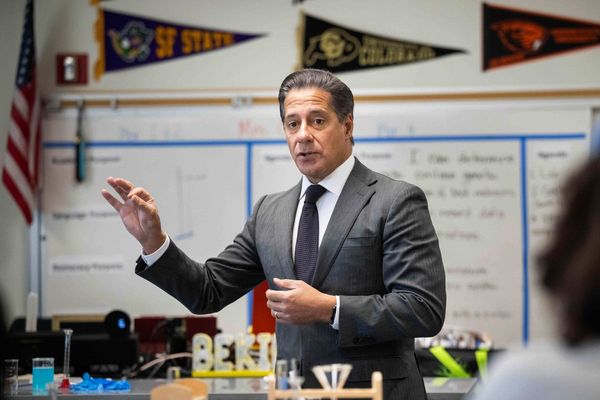
Asbestos fragments found in six Melbourne parks are being blamed on illegal dumping and poor cleaning of sites.
The Environment Protection Authority is investigating after the cancer-causing substance was found at parks in the Hobsons Bay and Merri-bek council areas.
Early investigations raised concerns the asbestos was being introduced to the parks through mulch deliveries, like the contaminated mulch crisis in NSW.
But the regulator says there is no evidence of that, declaring mulch producers appeared to have a clean bill of health.

"Mulch producers are unlikely the source for this contamination," the authority's Duncan Pendrigh told reporters on Monday.
"There may be something being introduced in the supply chain."
Some of the mulch was also seven years old, he said.
"It's very weathered and it's possible that it was laid on material that should have been cleaned better."
Regardless, the authority later said it was writing to councils demanding they assess quality controls for landscaping work and supply contracts for garden mulch.
It was also writing to demolition companies to remind them of their asbestos management obligations.
The authority is confident the scale of the problem is not akin to the situation in Sydney, where asbestos-contaminated mulch has been found at 75 sites.
But it concedes asbestos would continue to be found because of its widespread use in the building sector until the 1990s and the subsequent lack of demolition controls.
"A little piece of asbestos can be found in lots of places around the state and can be introduced accidentally in minor quantities," Mr Pendrigh said.
Asbestos contamination has been confirmed in two parks and lab results on Tuesday are expected to confirm contamination in four others.
A seventh park, the PA Burns Reserve dog park at Altona, remains under investigation.
Gravel and concrete aggregate appear to be coming through mulch laid around a toilet block.
Mr Pendrigh described the contamination in the parks as "very, very low", with material found containing bonded asbestos rather than the more dangerous friable asbestos.
Victoria's chief environmental scientist Mark Patrick Taylor said asbestos was a hazard but it resides in a third of homes.
"It only becomes a risk when the asbestos is fragmented, broken up and produces fibres and the potential risk of harm would occur when those fibres are inhaled," he said.
Hobsons Bay City Council, where five of the six parks are located, on Sunday received two remedial notices from the authority requesting proactive inspections of more parks and gardens.
The notices require council to commission a hygienist to inspect all council-managed parks and gardens that have received mulch in the past 18 months.
The council confirmed the works were under way.
The environmental watchdog will also review the council's procedures for sourcing and handling mulch, and has requested all reports dating back to July 2021 regarding asbestos-containing materials found in mulch in or near council infrastructure.
In a statement, the council said it would provide a list of all suppliers used to source mulch, as well as a list of contractors and sub-contractors used, from the same time period.

Merri-bek Council was remediating Hosken Reserve at North Coburg after asbestos, believed to have originated from historic building material, was found during the construction of a park at the reserve in January.
The asbestos-contaminated soil was found within the area closed for the major upgrade works and professionally removed but more was discovered recently in the same spot.
The contaminated soil is being removed.
Energy Minister Lily D'Ambrosio voiced her confidence in the authority's management of the matter, and seemed disinclined for Victoria to follow NSW in establishing an asbestos task force.







